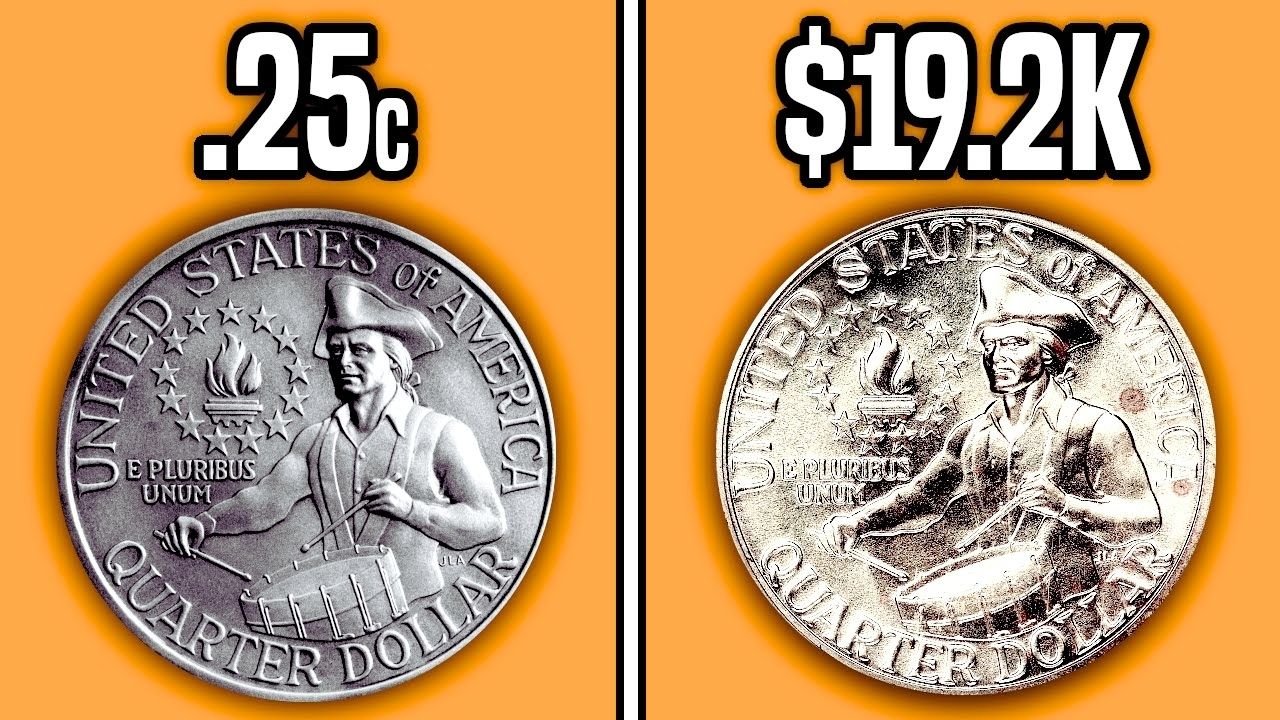A Hidden Gem in Your Change
Folks across America are digging through their pockets after hearing about the 1976 Bicentennial Quarter. This coin came out to mark 200 years since the country declared independence. Most are worth just 25 cents, but a few rare ones with special mistakes from the mint can go for up to $2 million. Picture finding one in your wallet or a jar at home. It shows George Washington on one side and a drummer boy on the back with dates 1776-1976. What sets the valuable ones apart are things like errors in how they were made or being struck in silver by accident. Coin experts say these rarities pop up now and then, sparking a hunt among collectors.
The Story of the Bicentennial Coin
Back in 1976, the U.S. Mint wanted to celebrate the big anniversary with new designs on quarters, half dollars, and dollars. They made over a billion quarters alone, so most are common. The front has Washington like usual, but the back swaps the eagle for a colonial drummer beating a rhythm, surrounded by 13 stars for the original states. Mints in Philadelphia, Denver, and San Francisco all pitched in. Philadelphia ones have no mark, Denver has a D, and San Francisco has an S. Some from San Francisco were made in silver for collectors, but mix-ups happened, leading to treasures. People saved them as keepsakes, but errors slipped into everyday money.
Why Some Quarters Fetch Big Bucks
The big money comes from minting goofs and top condition. Normal quarters are copper-nickel, but some got struck on silver blanks meant for special sets. Others have double images where the stamp hit twice, or the design is off-center. Condition matters a ton; shiny ones without scratches grade high and sell for more. Experts at places like PCGS grade them from 1 to 70. A perfect one with an error could hit that $2 million mark, though most top out lower. Demand from collectors pushes prices up, especially as folks remember the bicentennial.
| Grade | Average Value |
|---|---|
| Circulated | $0.25 – $1 |
| MS-65 | $10 – $50 |
| MS-69 | $5,000 – $20,000 |
Spotting Errors That Pay Off
Look close for signs of mistakes. Double die means letters or numbers look blurry from two stamps. Off-center strikes shift the picture to one side. Wrong planchet means it got made on the wrong metal, like silver instead of clad. Overstruck ones show bits of another coin’s design. No mint mark on a San Francisco silver one is super rare. These flaws make them stand out and worth a fortune.
Check the date for doubling on 1776-1976.
Weigh it; silver is about 5.75 grams, clad is 5.67.
Look at edges for silver shine without copper line.
Use a magnifier for blurry words like Liberty.
Steps to Check Your Own Quarters
Grab a quarter and start simple. Flip to the front and see the mint mark near Washington’s hair. An S could mean silver. Feel the weight; heavier might be special. Shine a light and hunt for doubles on the drummer or torch. Measure the center; if off, that’s a clue. Don’t clean it, as dirt can protect value. Take pics and compare online to known rarities. If it looks good, head to a coin shop for a quick check.
| Feature | What to Look For |
|---|---|
| Mint Mark | S for potential silver |
| Weight | Over 5.67 grams |
| Design | Doubling or shift |
Recent Finds and Auction Buzz
Lately, stories pop up of folks finding these in change or old boxes. One sold for over $19,000 at auction due to a deep cameo finish. Others with errors hit $8,000 or more. While $2 million is the dream for the rarest, like a prototype or major flaw, real sales show thousands are common for good ones. With the 250th anniversary coming in 2026, prices might climb. Collectors watch sites like Heritage Auctions for trends.
Advice for Budding Treasure Hunters
Start by checking loose change or ask family for old coins. Join online groups for tips. If you think you have a winner, get it graded professionally to prove its worth. Sell at auctions or dealers for the best deal. Remember, most are not rare, but the hunt is fun and ties you to history. Who knows, your next quarter could be the big one

